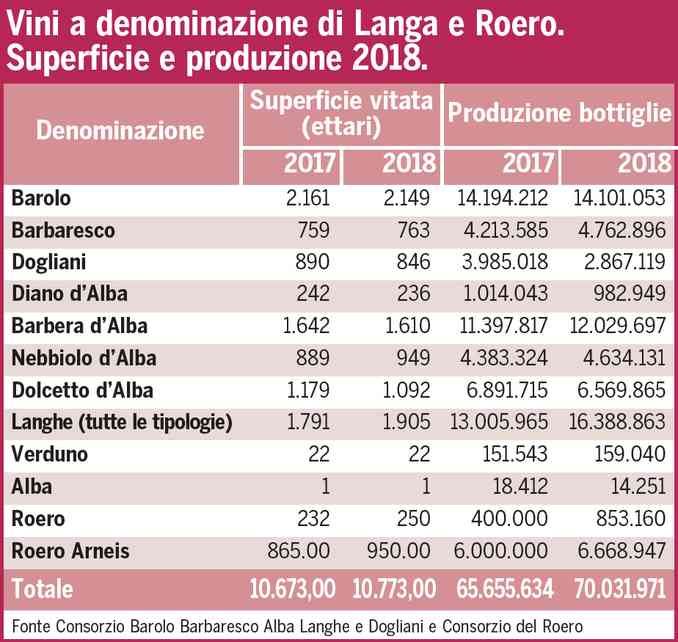Barolo: 12 hectares of loss in 2018!
After the climatological results and the first favourable qualitative estimates for the year 2018, which were already published at the end of last year, it is time for the quantitative results.
At national level, there has been a double-digit increase, in some areas between 20% and 30%.
This is possible because 2017 was a dry and less fertile year than usual, while 2018 benefited from a more favourable climate.
The data for the vineyards of Langa and Roero are available thanks to the collaboration of the Barolo, Barbaresco, Alba, Alba, Langhe and Dogliani Consortium and the Roero Consortium. The analysis does not cover Asti, Moscato d'Asti, Alta Langa and the wines of Piedmont DOC, designations of origin managed by other protection consorzio.
Let's look at the trend of twelve wines, five of Nebbiolo (Barolo, Barbaresco, Roero, Nebbiolo d'Alba and Alba), three of Dolcetto (Dolcetto d'Alba, Dogliani and Diano) and then Barbera d'Alba, Verduno Pelaverga, Roero Arneis and the large group of Doc Langhe.
In order to facilitate analysis, we have drawn up a table comparing the data on areas under vines and actual production from 2017 to 2018. At Piedmont level, the transition between 2017 and 2018 led to a new increase in the area under vines, including in the Langa and Roero: the number of hectares of vineyards with a designation of origin increased from 10,673 to 10,773, an increase facilitated by the major development of the Arneis, Nebbiolo and Langhe DOC plants, but mitigated by the withdrawal of the hectares of Barbera and Dolcetto.
The loss of vineyards of the three denominations based on Dolcetto has reached the quota of 137 hectares and that of Barbera d'Alba is 42 hectares. Nebbiolo, Barbaresco (4 hectares), Nebbiolo d'Alba (60 hectares) and Roero (18 hectares) have grown, while Barolo shows a small decrease (12 hectares).
For Langhe Nebbiolo we do not have the data, but we can assume that there is a new increase, as the DOC Langhe as a whole has increased by 114 hectares.
In terms of production data, the minus sign is particularly relevant to Dolcetto's names and, in a more unique than rare case, Barolo, which loses a handful of about 90,000 bottles compared to 2017.
Overall, actual production is growing by about four and a half million bottles compared to 2017, recouping everything lost the previous year.
If we evaluate things in a reasoned way, we confirm what was said at the Vintage Preview in Turin, in December: 2018 was not as abundant as anyone had imagined.
It was rather a return to the level of 2016, after a very bad year - 2017.
Excluding the wines of Dolcetto and Barolo, the production of all other wines has grown, even for Barbera d'Alba, which has also lost part of its production.
The strongest increases are those of the two Roero, Barbera d'Alba, Barbaresco and especially of the DOC complex Langhe, which showed a significant increase of almost three million and 400,000 bottles.



